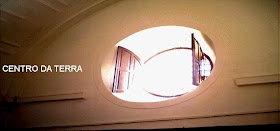Shibam_Yemen
Deep in the middle of Yemen lays an iconic city that pioneered the concept of skyscrapers.
Shibam, a city of about 7,000 people, was founded sometime around the 3rd century AD.
The town, in Hadramaut Governorate in the Wadi Hadramaut, Seiyun Distric, was built in its unique way to help protect residents from regional Bedouin attacks. Enormous clay walls were built around the city and residences were built upward rather than outward. Shibam is often referred to as “the oldest skyscraper city in the world,” and is one of the oldest examples of vertical urban planning.
Shibam, a city of about 7,000 people, was founded sometime around the 3rd century AD.
The town, in Hadramaut Governorate in the Wadi Hadramaut, Seiyun Distric, was built in its unique way to help protect residents from regional Bedouin attacks. Enormous clay walls were built around the city and residences were built upward rather than outward. Shibam is often referred to as “the oldest skyscraper city in the world,” and is one of the oldest examples of vertical urban planning.
When the city was constructed, the residents lacked the construction materials and techniques we have today. Instead they built with mud and clay, which gives the town the unique distinction as having the tallest mud buildings in the world – the tallest of which are over one hundred feet tall. To protect the buildings from rain and erosion, the exterior walls are thickly coated and must be anually maintained.
Most of the structures you see today in Shibam date from about the 16th century. Many have been rebuilt numerous times. There are about 500 structures in town called “tower houses,” apartment buildings that rise 5 to 11 stories tall.
The regional political instability combined with Shibam being in a somewhat remote location both conspire to keep it from becoming a more popular tourist destination.
"The old walled city of Shibam and Wadi Hadramaut constitute an outstanding example of human settlement and land use. The domestic architecture of Shibam is an outstanding characteristic example of houses in the Arab and Muslim world.
The city is built on a hillock, which has allowed it to escape the devastating floods of Wadi Hadramaut and to become the capital of the territory after the destruction of ancient pre-Islamic capital, Shabwa, in AD 300. Its plan is trapezoidal, almost rectangular; and it is enclosed by earthen walls within which a block of dwellings, also built from earth, have been laid out on an orthogonal grid. The highest house is eleven storeys high and the average is five.
The impressive structures for the most part date from the 16th century, following a devastating flood of which Shibam was the victim in 1532-33. However, some older houses and large buildings still remain from the first centuries of Islam, such as the Friday Mosque, built in 904, and the castle, built in 1220.
In Shibam there are some mosques, two ancient sultan's palaces, a double monumental door and 500 more buildings, separated or grouped, but all made uniform by the material of which they are constructed: unfired clay."
For more information please visit Unesco website here.







.jpg)






















![Terra [In]cognita project: Earthen architecture in Europe](http://1.bp.blogspot.com/-36uMVOoZMLE/TazQAiZE1KI/AAAAAAAAByA/NCxO8IKqLTg/s285/logoterraincognita.jpg)
